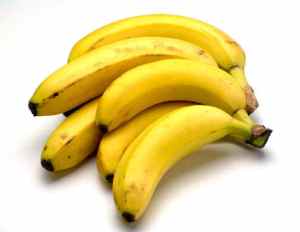
What is resistant starch?
Resistant starch (RS) is a type of starch that is not digested in the stomach or small intestine, reaching the colon intact. Simply put, it “resists” digestion. This explains why we do not see spikes in either blood glucose or insulin after eating resistant starch, and why we do not obtain significant calories from resistant starch.
There are four types of resistant starch:
- RS Type 1 – Is found in grains, seeds and legumes and resists digestion because it’s bound within the fibrous cell walls;
- RS Type 2 – Is found in some starchy foods, including raw potatoes and green (unripe) bananas;
- RS Type 3 – Is formed when certain starchy foods, including potatoes and rice, are cooked and then cooled. The cooling turns some of the digestible starches into resistant starches via retrogradation;
- RS Type 4 – Is man-made and formed via a chemical process.
However, this classification is not so simple, as several different types of resistant starch can co-exist in the same food.
Depending on how foods are prepared, the amount of resistant starch changes. For example, allowing a banana to ripen (turn yellow) will degrade the resistant starches and turn them into regular starches.
Where to find resistant starch
Resistant starch occurs in a number of natural foods. Some legumes, many tubers such as potatoes, and many fruits, especially unripe bananas and plantains.
There are several supplementary sources such as raw potato starch, plantain flour and tapioca starch. Raw (not sprouted) mung beans are also a good source of resistant starch, so mung bean starch (found often in asian grocery stores) can also work.
Food for your gut
Just like anything other living organism, your gut bacteria requires a food source. They need to eat to survive, and certain food sources are better than others. Simply put, resistant starch is a high quality food for your gut bacteria. This is the very basic, but most important function of resistant starch.
How does it work?
A healthy human gut has hundreds of bacterial species, outnumbering all other cells approximately 10 to 1. The overall balance of these bacteria has an important effect on health and wellbeing. Resistant starch resists digestion until it reaches the colon where it feeds your good bacteria.
The good bacteria feeds on resistant starch and produce short chain fatty acids, with butyrate being the most significant due its beneficial effects on the colon and overall health. Butyrate is the prefered energy source for the cells lining the colon, it also has a role in increasing metabolism and decreasing overall inflammation.
Below are just some of the health related benefits backed by science to consuming resistant starch.
Improve gut integrity and overall gut function
As mentioned earlier, resistant starch improves the overall quality and functionality of your gut bacteria. It also inhibits endotoxins from getting into circulation and can reduce leaky gut, which could have a positive effect with regards to allergies and autoimmune conditions.
Improved insulin sensitivity
Consuming Resistant starch improves insulin sensitivity, even in people with metabolic syndrome.
Lowers the blood glucose response to food
A popular reason people avoid even minimal amounts of dietary carbohydrate is the blood glucose response. It’s too high. Resistant starch lowers blood glucose spike after meals. This reduction may carry over to subsequent meals.
Reduces fasting blood sugar
This is one of the most commonly mentioned benefits of resistant starch. With a reduction in blood sugar levels, resistant starch may help you avoid chronic disease and improve your quality of life.
Increases satiety
In a recent human study, a large dose of resistant starch increased satiety and decreased subsequent food intake.
Enhanced magnesium absorption
Most likely because resistant starch improves overall gut function and integrity, resistant starch increases dietary magnesium absorption.
Consuming resistant starch may also have the following benefits:
- Improved body composition;
- Improved thyroid function;
- Improved sleep.
Adding resistant starch to your diet

In a modern diet a person may only consume about 5g of resistant starch daily, compared to many traditional diets where 20g or 30g was consumed per day. You can add resistant starch to your diet by either consuming it from a food source or through supplementation.
Several commonly consumed foods are high in resistant starch. These foods include, raw potatoes, cooked and then cooled potatoes, yams, green bananas, various legumes, lentils and raw oats.
These foods are commonly high-carbohydrate foods, making them out of the question if you are following a low-carbohydrate nutrition plan. However, even if you are eating a low-carbohydrate diet, you can still see some benefit from consuming some resistant starch.
You can add resistant starch to your diet without adding any dietary carbohydrates. This is where our supplements, such as raw potato starch come in to the equation.
Raw potato starch contains approximately 8g of resistant starch per tablespoon and almost zero digestible carbohydrate.
It is cheap. It does have a fairly bland flavour, but it can be added into your diet in a variety of ways, such as by adding to foods, smoothies or mixing it with water.
Four tablespoons will give you about 32g of resistant starch. Like most supplements, it is important to build up, as too much too soon may have disastrous results.
There doesn’t seem to be any reason to consume much more than that anyway, as excess amounts seem to pass through your body when you reach about 50g per day.
